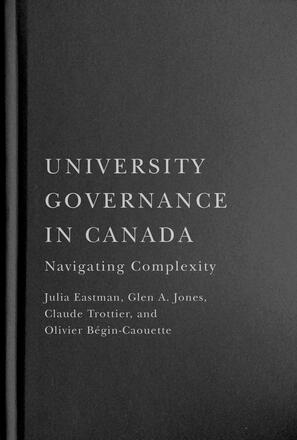
University Governance in Canada
Navigating Complexity
Who decides how Canadian universities serve students, scholarship, and society?
Description
Universities play essential roles in Canadian society. The internal and external governance of these complex institutions faces ever-evolving challenges within a rapidly shifting international context.
Written by a national team of scholars, University Governance in Canada asks how institutional decisions are made and who is behind these choices. By exploring the historical evolution and regional contexts of Canadian universities, as well as current trends, the book gives readers deep insight into how these institutions are governed. The authors explore the tensions between academic governance, external and internal stakeholder expectations, and societal demands as they relate to higher education and research in Canada. Comprising a case study of six major universities, the book examines the dynamics of governance at the institutional, provincial, federal, and international levels and reveals how Canadian universities make decisions and how well they are equipped to meet current and future opportunities and challenges.
Canadians invest a lot of money, time, hope, and expectations in their universities. University Governance in Canada gives policy-makers, scholars, governors, leaders at all levels, faculty, staff, students, and citizens at large knowledge and tools that will help ensure the country’s universities excel in their missions and deliver fully on these investments.
Reviews
“Rather than shying away from the complexities, political challenges, and messiness of university governance, this book situates these dynamics in a larger framework that encompasses the inherent tensions of governance. The result is a more balanced and nuanced analysis that builds empathy and appreciation as well as insight and critique.” Patricia Bradshaw, Saint Mary’s University